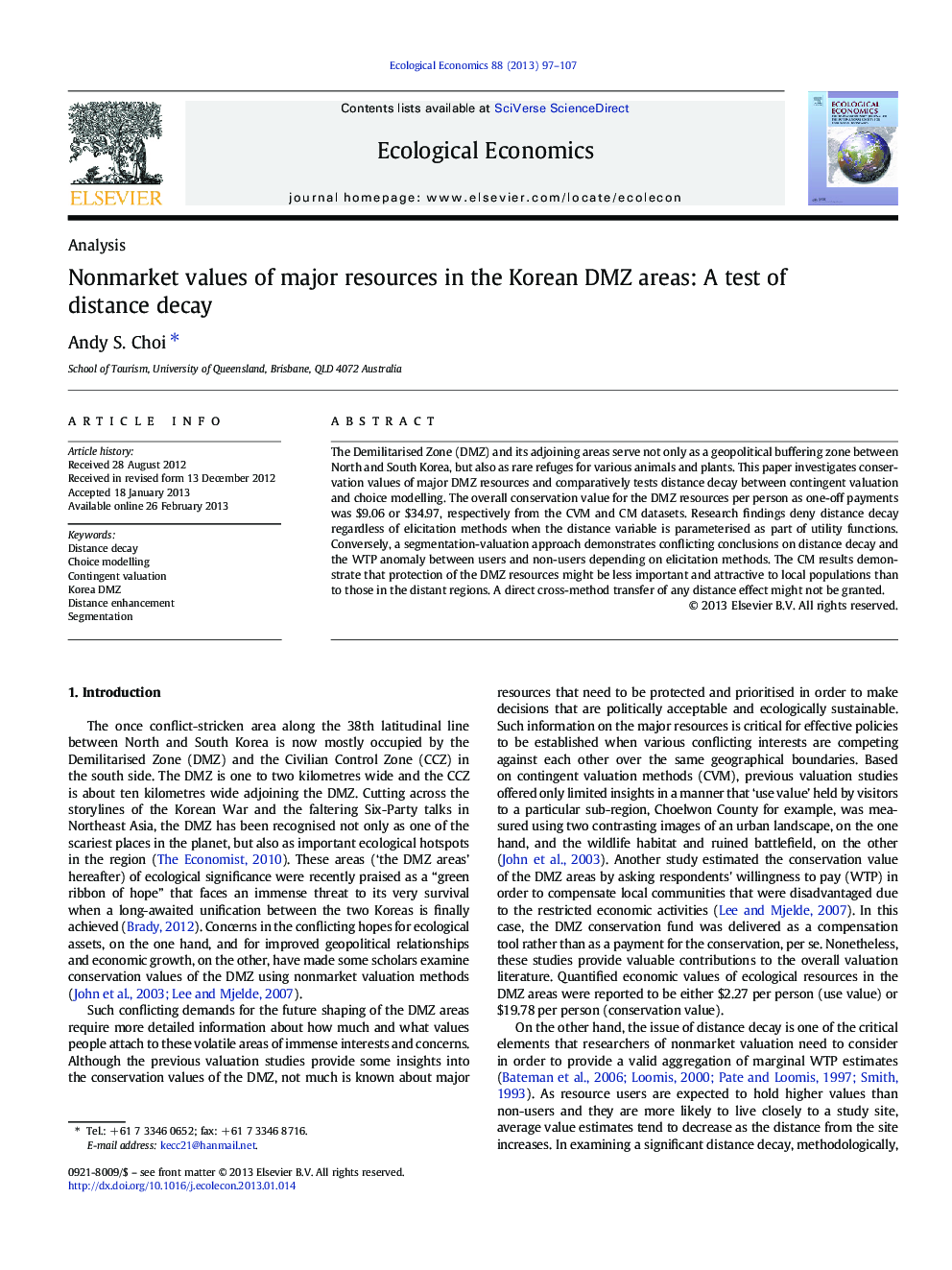| Article ID | Journal | Published Year | Pages | File Type |
|---|---|---|---|---|
| 5050159 | Ecological Economics | 2013 | 11 Pages |
The Demilitarised Zone (DMZ) and its adjoining areas serve not only as a geopolitical buffering zone between North and South Korea, but also as rare refuges for various animals and plants. This paper investigates conservation values of major DMZ resources and comparatively tests distance decay between contingent valuation and choice modelling. The overall conservation value for the DMZ resources per person as one-off payments was $9.06 or $34.97, respectively from the CVM and CM datasets. Research findings deny distance decay regardless of elicitation methods when the distance variable is parameterised as part of utility functions. Conversely, a segmentation-valuation approach demonstrates conflicting conclusions on distance decay and the WTP anomaly between users and non-users depending on elicitation methods. The CM results demonstrate that protection of the DMZ resources might be less important and attractive to local populations than to those in the distant regions. A direct cross-method transfer of any distance effect might not be granted.
⺠This paper investigates nonmarket values of the DMZ resources, South Korea. ⺠Mean WTP estimates are significantly different between different elicitation methods. ⺠Distance decay was confirmed using CVM responses. ⺠Distance enhancement was found using choice modelling data. ⺠A direct cross-method transfer of any distance decay trend might not be granted.
